The History Book Club discussion

This topic is about
Landslide
PRESIDENTIAL SERIES
>
PRESIDENTIAL SERIES: GLOSSARY -LANDSLIDE (SPOILER THREAD)
 Harry Byrd, Sr.:
Harry Byrd, Sr.: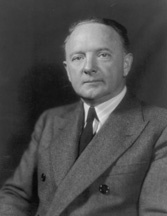
a Senator from Virginia; born in Martinsburg, Berkeley County, W.Va., June 10, 1887; moved with his parents to Winchester, Va., in 1887; attended the public schools and Shenandoah Valley Academy at Winchester, Va.; entered the newspaper publishing business in 1903 and became publisher of the Winchester (Va.) Star; also engaged extensively in agricultural pursuits near Berryville, Va., in 1906, specializing in growing and storing apples and peaches; president of the Valley Turnpike Co. 1908-1918; member, State senate1915-1925; State fuel commissioner in 1918; was elected chairman of the Democratic State committee in 1922; Governor of Virginia 1926-1930; Democratic National committeeman 1928-1940; was appointed March 4, 1933, and subsequently elected on November 7, 1933, as a Democrat to the United States Senate to fill the vacancy caused by the resignation of Claude A. Swanson; reelected in 1934, 1940, 1946, 1952, 1958, and 1964, and served from March 4, 1933, until his resignation November 10, 1965; chairman, Committee on Rules (Seventy-seventh through Seventy-ninth Congresses), Committee on Finance (Eighty-fourth through Eighty-ninth Congresses), Joint Committee on the Reduction of Nonessential Federal Expenditures (Seventy-seventh through Eighty-ninth Congresses), Joint Committee on Internal Revenue Taxation (Eighty-fourth through Eighty-ninth Congresses); died in Berryville, Va., October 20, 1966; interment in Mount Hebron Cemetery, Winchester, Va.
(Source: http://bioguide.congress.gov/scripts/...)
More:
http://en.wikipedia.org/wiki/Harry_F....
http://www.lva.virginia.gov/exhibits/...
http://www.encyclopediavirginia.org/B...
 Ronald L. Heinemann
Ronald L. Heinemann
 Kermit Gordon:
Kermit Gordon:
was Director of the United States Bureau of the Budget (now the Office of Management and Budget) (December 28, 1962 - June 1, 1965) during the administration of John F. Kennedy. He continued to serve in this capacity in the Lyndon Johnson administration. He oversaw the creation of the first budgets for Johnson's Great Society domestic agenda.
(Source: http://en.wikipedia.org/wiki/Kermit_G...)
More:
http://www.brookings.edu/~/media/Proj...
 Walter Heller:
Walter Heller: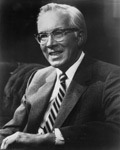
Walter Heller’s claim to fame stems from his years as chairman of the Council of Economic Advisers (CEA) from 1961 to 1964, under presidents John F. Kennedy and Lyndon B. Johnson. Before that, and after, he was an economics professor at the University of Minnesota.
As chairman of the CEA, Heller persuaded President Kennedy to cut marginal tax rates. This cut in tax rates, which was passed after Kennedy’s death, helped cause a boom in the U.S. economy. Heller’s CEA also developed the first “voluntary” (i.e., enforced by veiled threats rather than by explicit laws) wage-price guidelines.
Heller’s early academic work was on state and local taxation. In 1947 and 1948 he was tax adviser to the U.S. military government in Germany. He was involved in the currency and tax reforms that helped spur the German economic boom (see german economic miracle). In a 1950 article, Heller noted that the reduction in marginal tax rates helped “remove the repressive effect of extremely high rates.”
According to tax economist Joseph Pechman, Heller was also one of the first economists to recognize that tax deductions and tax preferences narrow the income tax base, thus requiring, for a given amount of revenue, higher marginal tax rates.
(Source: http://www.econlib.org/library/Enc/bi...)
More:
http://en.wikipedia.org/wiki/Walter_H...
http://www.nytimes.com/1987/06/17/obi...
 Karl Mundt:
Karl Mundt: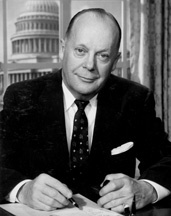
a Representative and a Senator from South Dakota; born in Humboldt, Minnehaha County, S.Dak., June 3, 1900; attended the public schools of Humboldt, Pierre, and Madison, S.Dak.; graduated from Carleton College, Northfield, Minn., in 1923 and from Columbia University, New York City, in 1927; high school teacher of speech and social science in Bryant, S.Dak., 1923-1924, and superintendent of schools in Bryant 1924-1927; speech and social science teacher in General Beadle State Teachers College, Madison, S.Dak., 1927-1936; also engaged in the real estate and insurance business and in agricultural pursuits; member of the State Game and Fish Commission 1931-1937; also engaged in literary pursuits; elected as a Republican to the Seventy-sixth Congress; reelected to the four succeeding Congresses and served from January 3, 1939, until his resignation on December 30, 1948, having been appointed to the United States Senate to fill the vacancy caused by the resignation of Vera C. Bushfield and served from December 31, 1948, to January 3, 1949; elected as a Republican to the United States Senate in 1948; reelected in 1954, 1960 and 1966 and served from December 31, 1948, to January 3, 1973; was not a candidate for reelection in 1972; died in Washington, D.C., August 16, 1974; interment in Graceland Cemetery, Madison, S.Dak.
(Source: http://bioguide.congress.gov/scripts/...)
More:
http://en.wikipedia.org/wiki/Karl_Ear...
 Ngo Dinh Diem:
Ngo Dinh Diem:
Ngo Dinh Diem was born in Vietnam in 1901. His ancestors had been converted to Christianity by Catholic missionaries in the 17th Century. Diem, like previous generations of his family, was educated in French Catholic schools. After he graduated he was trained as an administrator for the French authorities in Vietnam. At the age of twenty-five he became a provincial governor.
During the French-Indochina War, Diem left Vietnam for the United States. While there he met influential Catholics like John F. Kennedy. He told them that he opposed both communism and French colonialism and argued that he would make a good leader of Vietnam if the French decided to withdraw.
When the Geneva conference took place in 1954, the United States delegation proposed Diem's name as the new ruler of South Vietnam. The French argued against this claiming that Diem was "not only incapable but mad". However, eventually it was decided that Diem presented the best opportunity to keep South Vietnam from falling under the control of communism.
Once in power, the Americans discovered that Diem was unwilling to be a 'puppet' ruler. He constantly rejected their advice and made decisions that upset the South Vietnamese people. Several attempts were made to overthrow Diem but although the Americans were unhappy with his performance as president, they felt they had no choice but to support him.
In October, 1955, the South Vietnamese people were asked to choose between Bo Dai, the former Emperor of Vietnam, and Diem for the leadership of the country. Colonel Edward Lansdale suggested that Diem should provide two ballot papers, red for Diem and green for Bao Dai. Lansdale hoped that the Vietnamese belief that red signified good luck whilst green indicated bad fortune, would help influence the result.
When the voters arrived at the polling stations they found Diem's supporters in attendance. One voter complained afterwards: "They told us to put the red ballot into envelopes and to throw the green ones into the wastebasket. A few people, faithful to Bao Dai, disobeyed. As soon as they left, the agents went after them, and roughed them up... They beat one of my relatives to pulp."
After the election Diem informed his American advisers that he had achieved 98.2 per cent of the vote. They warned him that these figures would not be believed and suggested that he published a figure of around 70 per cent. Diem refused and as the Americans predicted, the election undermined his authority.
The North Vietnamese government reminded Diem that a General Election for the whole of the country was due in July, 1956. Diem refused to accept this and instead began arresting his opponents. In a short period of time, approximately 100,000 people were put in prison camps. Communists and socialists were his main targets but journalists, trade-unionists and leaders of religious groups were also arrested. Even children found writing anti-Diem messages on walls were put in prison.
When it became clear that Diem had no intention of holding elections for a united Vietnam, his political opponents began to consider alternative ways of obtaining their objectives. Some came to the conclusion that violence was the only way to persuade Diem to agree to the terms of the 1954 Geneva Conference. The year following the cancelled elections saw a large increase in the number of people leaving their homes to form armed groups in the forests of Vietnam. At first they were not in a position to take on the South Vietnamese Army and instead concentrated on what became known as 'soft targets'. In 1959, an estimated 1,200 of Diem's government officials were murdered.
Roman Catholics made up only just over 10% of the population in South Vietnam. As a reward for adopting the religion of their French masters. Catholics had always held a privileged position in Vietnam. The Catholic Church was the largest landowner in the country and most of the officials who helped administer the country for the French were Catholics.
The main religion in Vietnam was Buddhism. Surveys carried out in the 1960s suggest that around 70% of the population were followers of Buddha. The French, aware of the potential threat of Buddhism to their authority, passed laws to discourage its growth.
After the French left Vietnam the Catholics managed to hold onto their power in the country. Deim was a devout Catholic and tended to appoint people to positions of authority who shared his religious beliefs. This angered Buddhists, especially when the new government refused to repeal the anti-Buddhist laws passed by the French.
On May 8, 1963, Buddhists assembled in Hue to celebrate the 2527th birthday of the Buddha. Attempts were made by the police to disperse the crowds by opening fire on them. One woman and eight children were killed in their attempts to flee from the police.
The Buddhists were furious and began a series of demonstrations against the Diem government. In an attempt to let the world know how strongly they felt about the South Vietnamese government, it was decided to ask for volunteers to commit suicide.
On June 11, 1963, Thich Quang Due, a sixty-six year old monk, sat down in the middle of a busy Saigon road. He was then surrounded by a group of Buddhist monks and nuns who poured petrol over his head and then set fire to him. One eyewitness later commented: "As he burned he never moved a muscle, never uttered a sound, his outward composure in sharp contrast to the wailing people around him." While Thich Quang Due was burning to death, the monks and nuns gave out leaflets calling for Diem's government to show "charity and compassion " to all religions.
The government's response to this suicide was to arrest thousands of Buddhist monks. Many disappeared and were never seen again. By August another five monks had committed suicide by setting fire to themselves. One member of the South Vietnamese government responded to these self-immolations by telling a newspaper reporter: "Let them burn, and we shall clap our hands." Another offered to supply Buddhists who wanted to commit suicide with the necessary petrol.
These events convinced President John F. Kennedy that Diem would never be able to unite the South Vietnamese against communism. Several attempts had already been made to overthrow Diem but Kennedy had always instructed the CIA and the US military forces in Vietnam to protect him. In order to obtain a more popular leader of South Vietnam, Kennedy agreed that the role of the CIA should change. Lucien Conein, a CIA operative, provided a group of South Vietnamese generals with $40,000 to carry out the coup with the promise that US forces would make no attempt to protect Diem.
At the beginning of November, 1963, President Diem was overthrown by a military coup. After the generals had promised Diem that he would be allowed to leave the country they changed their mind and killed him. He was replaced by Nguyen Van Thieu, the chief of staff of the Armed Forces of South Vietnam.
(Source: http://www.spartacus.schoolnet.co.uk/...)
More:
http://en.wikipedia.org/wiki/Ngo_Dinh...
http://www.gwu.edu/~nsarchiv/NSAEBB/N...
 Ngo Dinh Hnu:
Ngo Dinh Hnu: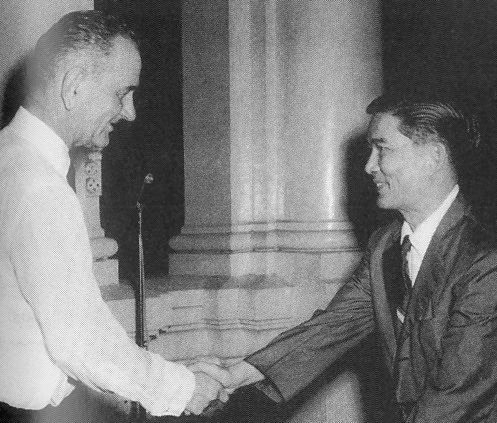
was the younger brother and chief political advisor of South Vietnam's first president, Ngô Ðình Diệm.
More:
http://en.wikipedia.org/wiki/Ngo_Dinh...
 Duong Van Minh:
Duong Van Minh: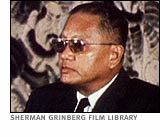
Known popularly as "Big Minh," Duong led the South Vietnamese army under prime minister Ngo Dinh Diem. In 1963, he became leader of South Vietnam after a coup in which Diem was murdered. Duong's rule lasted after only two months, but he briefly led South Vietnam again in 1975 before surrendering the nation to Communist forces.
(Source: http://www.pbs.org/wgbh/amex/vietnam/...)
More:
http://en.wikipedia.org/wiki/Duong_Va...
http://www.nytimes.com/2001/08/08/wor...
http://legacy.wilsoncenter.org/coldwa...
 Bryan,
Bryan,I am originally from South Dakota, which Karl Mundt represented for so long. I even had my picture taken with him when I was on a high school visit to D.C.
I knew the general outline of Ngo Dinh Diem's policies, but you have filled in a lot of details. The Vietnamese students in my ESL U.S. History class told me that Diem is actually the Vietnamese president's first name. Referring to him as "Diem," as our textbook did, is like referring to Johnson as "Lyndon."
I have read that Kennedy was upset by Ngo Dinh Diem's killing, although he definitely approved the coup itself.
 Wow, very cool, Ann.
Wow, very cool, Ann.The coup was one of those things that the U.S. did not stop. Lodge nor the White House had much influence to stop it. JFK was pulling support away from Diem.
 Bryan,
Bryan,Agreed that once the coup had taken place, the U.S. did not have control over Ngo Dinh Diem's life, but I think that the CIA, along with Ambassador Lodge, were very instrumental in encouraging the coup itself. $40,000 certainly helped it along. Money was worth more in those days. :-)
 Indeed, JFK and RFK were looking to get rid of Diem and reportedly encouraged a coup in secret conversations. The CIA was involved, too. Sad tale.
Indeed, JFK and RFK were looking to get rid of Diem and reportedly encouraged a coup in secret conversations. The CIA was involved, too. Sad tale.
 Maxwell Taylor:
Maxwell Taylor:
was born in Keytesville, Missouri, on 26 August 1901; graduated from the United States Military Academy, 1922; was commissioned a second lieutenant of engineering, June 1922, and attended his branch course; served in Hawaii with the 3d Engineers, 1923–1926; married Lydia Gardner Hopper, 1925; transferred to field artillery and served with the 10th Field Artillery, 1926–1927; was promoted to first lieutenant, February 1927; studied French in Paris and was instructor in French and later Spanish at West Point, 1927–1932; graduated from the Field Artillery School at Fort Sill, 1933, and the Command and General Staff School at Fort Leavenworth, 1935; was promoted to captain, August 1935; was a student of Japanese at the American embassy in Tokyo, 1935–1939, with detached military attache duty at Peking, China, 1937; graduated from the Army War College, 1940; was promoted to permanent major, July 1940; served in the War Plans Division and on a Hemisphere defense mission to Latin American countries, 1940; commanded the 12th Field Artillery Battalion, 1940–1941; served in the Office of the Secretary of the General Staff, 1941–1942; received temporary promotions to lieutenant colonel, December 1941, colonel, February 1942, and brigadier general, December 1942; was chief of staff of the 82d Airborne Division, 1942, then its artillery commander in operations in Sicily and Italy, 1942–1944; received temporary promotion to major general, May 1944; commanded the 101st Airborne Division in the Normandy invasion and the Western European campaigns, 1944–1945; was promoted to permanent lieutenant colonel, June 1945, and brigadier general, January 1948; was chief of staff of the European Command, 1949, and commander of the United States forces in Berlin, 1949–1951; was promoted to temporary lieutenant general and permanent major general, August 1951; was assistant chief of staff for operations, G–3, and deputy chief of staff for operations and administration, 1951–1953; was promoted to temporary general, June 1953; was commander of the Eighth Army in the final operations of the Korean War, 1953; initiated the Korean armed forces assistance program, 1953–1954; commanded United States Forces, Far East, and the Eighth Army 1954–1955, and was commander in chief, United Nations Command, 1955; was chief of staff of the United States Army, 30 June 1955–30 June 1959; opposed dependence upon a massive retaliation doctrine, pushed for an increase in conventional forces to ensure a capability of flexible response, guided the transition to a "pentomic" concept, and directed Army participation in sensitive operations at Little Rock, Lebanon, Taiwan, and Berlin; retired from active service, July 1959; was recalled as chairman of the Joint Chiefs of Staff, 1962–1964; again retired; became ambassador to South Vietnam, 1964–1965; was special consultant to the president and chairman of the Foreign Intelligence Advisory Board, 1965–1969; was president of the Institute of Defense Analysis, 1966–1969; died in Washington, D.C., on 19 April 1987.
(Source: http://www.history.army.mil/books/CG&...)
More:
http://en.wikipedia.org/wiki/Maxwell_...
http://www.arlingtoncemetery.net/mdta...
http://www.historynet.com/general-max...
http://www.shapell.org/manuscript.asp...
http://www.history.army.mil/books/CG&...
 by John M. Taylor (no photo)
by John M. Taylor (no photo) by Douglas Kinnard (no photo)
by Douglas Kinnard (no photo)
 by Larry Berman (no photo)
by Larry Berman (no photo) by
by
 Maxwell D. Taylor
Maxwell D. Taylor
 George Meany:
George Meany:
George Meany was the builder of the modern AFL-CIO. He was born into an Irish Catholic family in New York City and spent most of his boyhood in the Bronx. His father, Michael Meany, was president of the Bronx local of the United Association of Plumbers and Pipe Fitters and in 1910, Meany joined the union as an apprentice at the age of 16, working as a plumber in New York for the next decade.
In 1920, Meany was elected as the youngest member of the local union's executive board and two years later became a full-time business agent. During the 1920s, Meany was active on behalf of his local in both the New York City Central Labor Council and the New York State Federation of Labor, where he ran successfully for president in 1934.
As head of the New York state labor movement, Meany built a powerful political organization, passing one of the nation's first unemployment insurance laws and forging support for the reelection of President Franklin Roosevelt in 1936. Meany also led a successful strike for fair wages of craftsmen working on the public works projects of the New Deal.
Meany was elected secretary-treasurer of the national American Federation of Labor (AFL) in 1939. As second in command to President William Green, Meany played an important role in the formation of the War Labor Board, which helped spur the growth of union membership during the second world war. Meany took responsibility for the federation's international activities. While still in New York, working with the Jewish Labor Committee, he had actively supported German trade unionists fleeing the Nazis. He insisted on the inclusion of workers' rights in the postwar Marshall Plan. His leadership led to the creation of the International Confederation of Free Trade Unions at the end of the war, and he fought for free trade unions around the world for all of his career.
When a hostile Congress passed the repressive Taft-Hartley Act in 1947, Meany established and led Labor's League for Political Education, the first full-scale federation effort to register, educate and mobilize union members. Labor's strength helped elect Harry Truman as president in 1948.Meany was elected to the presidency of the AFL in 1952 on the death of William Green. He assumed the leadership of a divided labor movement. Many of the nation's industrial unions were part of the Congress of Industrial Organizations (CIO), which had been created in the 1930s. He immediately sought to unify the movement, an effort that culminated in the founding convention of the AFL-CIO in 1955. Meany was elected unanimously as the first president of the merged labor federation.
Meany modernized and expanded the national AFL-CIO, making the organization a powerful voice in the nation's political and legislative arena. Under his leadership, the American labor movement won unprecedented gains for ordinary working Americans, especially during the Kennedy and Johnson administrations. Meany, a staunch supporter of civil and equal rights his entire career, put the federation's muscle behind the civil rights movement, insisting that the historic 1964 Civil Rights Act call for an end to both workplace and community discrimination. The AFL-CIO was also the center of support for important social programs such as Medicare. His presidency also saw the creation of important new programs such as the Labor Studies Center, constituency organizations for women, minorities and retirees and training programs for minorities. Meany fully supported the organizing of the fledgling United Farm Workers union.
Meany viewed the labor movement as more than a "special interest" it was rather the only organization in American life that spoke for the common citizen. He termed it the "people's lobby." He believed strongly that free trade unions were an essential part of a democratic society—and he fought against both political extremists and corrupt influences. During the 25 years he led the merged AFL-CIO, he was the nation's strongest voice for human and civil rights, in America and around the world, speaking out against colonial exploitation of the developing world, supporting the state of Israel, fighting for the freedom of the states of Central Europe, advocating for Soviet Jews and supporting the fights against South African apartheid and against the military dictatorships in Spain and Chile.
As much as he valued the labor movement, George Meany valued his family and his church—he and his wife of more than 60 years, the former Eugenia McMahon, had three daughters, Regina, Eileen and Genevieve. In 1979, Meany stepped down as the president of the AFL-CIO and turned over its leadership to his second in command, Lane Kirkland. He died in 1980.
(Source: http://www.aflcio.org/About/Our-Histo...)
More:
http://en.wikipedia.org/wiki/George_M...
(no image)George Meany and His Times: A Biography by Archie robinson
 Whitney Young:
Whitney Young:
Born July 31, 1921, in Lincoln Ridge, Ky., Young got an early start in the professional world. At just 18 years old, he graduated from Kentucky State College and began a career teaching and coaching. Between 1942 and 1944, Young’s career took a turn while he served a stint in the U.S. Army. There, he demonstrated a flair for race relations by diffusing tensions between white and black soldiers working on a road construction project. After his discharge from the military, Young earned a master’s degree in social work from the University of Minnesota.
In 1947, Young began volunteering for the NUL’s Minnesota chapter. Three years later, NUL’s Omaha chapter named him president. In Nebraska, Young not only expanded the memberships of the NUL but helped score jobs for blacks in the community. All the while, he put this education to use by teaching social work at the university level. In 1954, he became social work dean at Clark Atlanta University. Six years later, he became a state president for the National Association for the Advancement of Colored People and won a Rockefeller grant to study at Harvard for a year.
The Voice of a Movement
As civil rights issues took center stage in the U.S., Young was named head of the NUL in 1961. During his tenure with the league, Young reportedly expanded its annual budget from $325,000 to $6.1 million. He also fought for cities to receive federal assistance to combat the social ills facing black America, a strategy President Johnson included in his War on Poverty platform. Moreover, Young pressured corporations such as Ford to hire more African Americans and established programs for black community leaders and youth to tackle problems such as high school dropout rates. To keep the American public abreast of the issues important to the NUL, Young launched a weekly column called “The Voice of Black America.” The fact that Young served as an advisor to Presidents Kennedy, Johnson and Nixon certainly contributed to his ability to effect groundbreaking changes as NUL head.
While serving as the NUL’s executive director, Young published a book called To Be Equal in 1964. The next year, he became president of the National Conference on Social Welfare. Young became head of the National Association of Social Workers Foundation in 1969. Also that year, Young released a book called Beyond Racism: Building an Open Society and received the Presidential Medal of Freedom from President Johnson.
Young’s life came to an unexpected end when he drowned in Nigeria in 1971 at the age of 49. President Nixon eulogized him. Ironically, just two years before, a plot to murder Young had been uncovered.
(Source: http://racerelations.about.com/od/tra...)
More:
http://en.wikipedia.org/wiki/Whitney_...
http://blackhistorynow.com/whitney-m-...
 Allen Dulles:
Allen Dulles: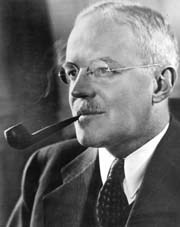
was an American diplomat, lawyer, banker, and public official who became the first civilian and the longest-serving (1953–1961) Director of Central Intelligence (de facto head of the U.S. Central Intelligence Agency) and a member of the Warren Commission.
More:
http://en.wikipedia.org/wiki/Allen_We...
https://www.cia.gov/news-information/...
http://www.spartacus.schoolnet.co.uk/...
http://www.nndb.com/people/390/000029...
http://findingaids.princeton.edu/coll...
 by James Srodes (no photo)
by James Srodes (no photo) by Kerstin von Lingen (no photo)
by Kerstin von Lingen (no photo) by Allen W. Dulles (no photo)
by Allen W. Dulles (no photo) by Peter Grose (no photo)
by Peter Grose (no photo) by
by
 Stephen Kinzer
Stephen Kinzer
 John McCloy:
John McCloy: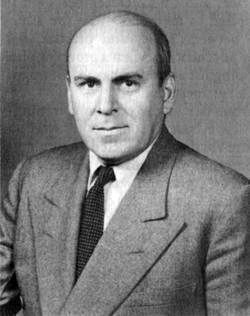
John J. McCloy was born on March 31, 1895 in Philadelphia, Pennsylvania. He graduated from Harvard Law School in 1921 and practiced law on Wall Street. Perhaps his most important case, "Black Tom" was also the catalyst for his political career. In the "Black Tom" case, McCloy proved that German agents sabotaged a US munitions factory in New Jersey in 1916. After winning the law suit, he served as an advisor to every president from Franklin Roosevelt to Ronald Regean.
He was appointed Assistant Secretary of War on April 22, 1941. By 1945, McCloy was spending most of his time working on issues involving postwar Germany. With the Secretary of War Henry Stimson's health failing, McCloy became increasingly involved in the War Department.
McCloy was a key player in deciding whether or not to drop the bomb. He was one of the few civilians to know about the project. During a meeting on June 18, 1945, Truman approved the invasion of mainland Japan. McCloy pushed for an alternative diplomatic approach to achieve a Japanese surrender. He wrote, "everyone was so intent on winning the war by military means that the introduction of political consideration was almost accidental." On the advice of President Truman, McCloy took his ideas to Secretary of State James Byrnes, who rejected them.
The Committee of Three, composed of Henry Stimson, James Forrestal, and Joseph Grew, was assigned by President Truman to explore alternatives to make Japan surrender. McCloy wrote a proposed surrender demand that was incorporated into Article 12 of the Potsdam Proclamation. The original draft of the Proclamation included language that would have allowed Japan to keep its emperor, a condition that would have greatly increased the chances of Japan's acceptance of surrender. After the atomic bombings, McCloy believed for the rest of his life that "we missed the opportunity of effecting a Japanese surrender, completely satisfactory to us, without the necessity of dropping bombs."
Between 1947 and 1949 McCloy served as president of the International Bank for Reconstruction and Development (the World Bank). From 1949 to 1952 he served as US military governor and high commissioner for Germany and helped rebuild the country. In 1961, McCloy became President Kennedy's principal disarmament advisor. He negotiated terms for the resumption of East-West disarmament talks and drafted a bill that led to the establishment of the US Arms Control and Disarmament Agency.
McCloy died on March 11, 1989 in Stamford, Conneticut.
(Source: http://www.nuclearfiles.org/menu/libr...)
More:
http://web.worldbank.org/WBSITE/EXTER...
http://en.wikipedia.org/wiki/John_J._...
 John Cooper:
John Cooper: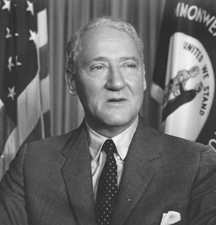
a Senator from Kentucky; born in Somerset, Pulaski County, Ky., August 23, 1901; attended the public schools at Somerset and Centre College, Danville, Ky.; graduated from Yale College 1923; attended Harvard Law School 1923-1925; admitted to the bar in 1928 and commenced practice in Somerset, Ky.; member, Kentucky house of representatives 1928-1930; judge of Pulaski County, Ky., 1930-1938; member of the board of trustees of the University of Kentucky 1935-1946; served during the Second World War in the United States Army 1942-1946, attaining the rank of captain; elected circuit judge of the twenty-eighth judicial district of Kentucky in 1945 and served until his resignation in November 1946; elected on November 5, 1946, as a Republican to the United States Senate to fill the vacancy caused by the resignation of Albert B. Chandler and served from November 6, 1946, to January 3, 1949; unsuccessful candidate for reelection in 1948; resumed the practice of law; delegate to the General Assembly of the United Nations in 1949 and alternate delegate in 1950 and 1951; served as adviser to the Secretary of State at the London and Brussels meetings of the Council of Ministers of the North Atlantic Treaty Organization in 1950; elected on November 4, 1952, as a Republican to the United States Senate to fill the vacancy caused by the death of Virgil M. Chapman and served from November 5, 1952, to January 3, 1955; unsuccessful candidate for reelection in 1954; Ambassador to India and Nepal 1955-1956; delegate, United Nations General Assembly 1968; elected on November 6, 1956, as a Republican to the United States Senate to fill the vacancy caused by the death of Alben W. Barkley; reelected in 1960, and again in 1966, and served from November 7, 1956, to January 3, 1973; was not a candidate for reelection in 1972; Ambassador to the German Democratic Republic 1974-1976; resumed the practice of law in Washington, D.C., and was a resident of Somerset, Ky., and Washington, D.C., until his death in Washington, D.C., February 21, 1991; interment in Arlington National Cemetery, Arlington, Va.
(Source: http://bioguide.congress.gov/scripts/...)
More:
http://en.wikipedia.org/wiki/John_She...
http://www.senate.gov/artandhistory/h...
 Hale Boggs:
Hale Boggs: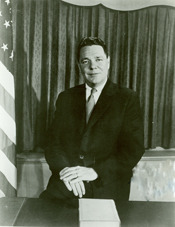
a Representative from Louisiana; born in Long Beach, Harrison County, Miss., February 15, 1914; attended the public and parochial schools of Jefferson Parish, La.; was graduated from Tulane University, New Orleans, La., in 1935 and from the law department of the same university in 1937; was admitted to the bar in 1937 and commenced practice in New Orleans, La.; elected as a Democrat to the Seventy-seventh Congress (January 3, 1941-January 3, 1943); unsuccessful candidate for renomination in 1942; resumed the practice of law in New Orleans, La.; enlisted in the United States Naval Reserve in November 1943; was commissioned an ensign and attached to the Potomac River Naval Command and the United States Maritime Service until separated in January 1946; again elected as a Democrat to the Eightieth and to the thirteen succeeding Congresses; chairman, Special Committee on Campaign Expenditures (Eighty-second Congress); majority whip (Eighty-seventh through Ninety-first Congresses), majority leader (Ninety-second Congress); disappeared while on a campaign flight from Anchorage to Juneau, Alaska, October 16, 1972; served from January 3, 1947, until January 3, 1973, when he was presumed dead pursuant to House Resolution 1, Ninety-third Congress.
(Source: http://bioguide.congress.gov/scripts/...)
More:
http://en.wikipedia.org/wiki/Hale_Boggs
http://www.lbjlib.utexas.edu/johnson/...
 Gerald Ford:
Gerald Ford: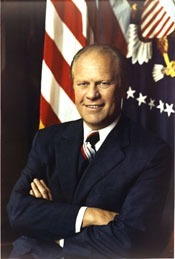
a Representative from Michigan, Vice President, and thirty-eighth President of the United States; born in Omaha, Douglas County, Nebr., July 14, 1913; moved to Grand Rapids, Mich., 1914 and attended the public schools; graduated, University of Michigan at Ann Arbor, Mich., 1935; graduated from Yale University Law School, New Haven, Conn., 1941; admitted to the bar in 1941; served in the United States Navy 1942-1946; elected as a Republican to the Eighty-first Congress; reelected to the twelve succeeding Congresses and served from January 3, 1949, until his resignation from the United States House of Representatives December 6, 1973, to become the fortieth Vice President of the United States; minority leader (Eighty-ninth through Ninety-third Congresses); first Vice President to be nominated by the President and confirmed by the Congress pursuant to the twenty-fifth amendment to the Constitution of the United States; sworn in as the thirty-eighth President of the United States, August 9, 1974, when President Richard M. Nixon resigned, and served until January 20, 1977; unsuccessful candidate for election in 1976; died on December 26, 2006, in Rancho Mirage, Calif.; lay in state in the Capitol Rotunda, December 30, 2006, to January 2, 2007; interment at the Gerald R. Ford Presidential Museum and Library, Grand Rapids, Mich.
(Source: http://bioguide.congress.gov/scripts/...)
More:
http://millercenter.org/president/ford
http://www.whitehouse.gov/about/presi...
http://www.fordlibrarymuseum.gov/grf/...

 Gerald Ford
Gerald Ford
 Earl Warren:
Earl Warren: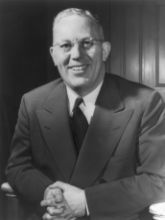
Earl Warren was born in Los Angeles on March 19, 1891. Throughout most of his childhood, he and his family lived in Bakersfield, where his father was a railroad employee. His determination to be a lawyer dates to before his high school days, when he listened to criminal cases at the Kern County courthouse.
Warren attended the University of California, Berkeley, where he majored in political science for three years before entering UCB's School of Law. He received his B.A. degree in 1912 and his J.D. degree in 1914. On May 14, 1915, he was admitted to the California bar.
After graduation, Warren worked in law offices in San Francisco and Oakland, the only time in his career when he was engaged in private practice. From 1920 until his retirement from the Supreme Court in 1969, he served without interruption in public office. In 1925, he was appointed Alameda County district attorney when the incumbent resigned. He won election to the post in his own right in 1926, 1930, and 1934.
During his fourteen years as district attorney, Warren developed a reputation as a crime fighter. As a prosecutor Warren was sometimes accused of high-handedness in his methods, but in thirteen years and in thousands of cases ranging from murder to window-breaking, he never had a conviction reversed by a higher court. Warren was a member of the Board of Regents of the University of California. Although a Republican, Warren had broad bipartisan support because of his centrist to liberal views. He is the only person to have been elected to the governorship of California for three successive terms (in 1942, 1946, and 1950). In 1946, he was the only governor in our history to win an election unopposed, when he won the Democratic, Republican, and Progressive primaries.
In 1948, Warren was the Republican Party's nominee for vice-president of the United States on a ticket headed by the popular Thomas E. Dewey. (That famous election was the only one Warren ever lost.) Interestingly, one of Warren's unsuccessful initiatives as governor was for universal health care.
In 1953, President Dwight D. Eisenhower appointed Earl Warren the fourteenth Chief Justice of the United States. Among the Warren Court's most important decisions was the ruling that made racial segregation in public schools unconstitutional. Another was the "one-man one-vote" ruling that caused a major shift in legislative power from rural areas to cities.
Besides his work on the court, Warren headed the commission that investigated the assassination of President John F. Kennedy.
Earl Warren retired in 1969, and died on July 9, 1974, in Washington, D.C.
Earl Warren College, the fourth of UC San Diego's undergraduate colleges, was founded in 1974, and named after the former Chief Justice in a ceremony attended by Thurgood Marshall, a member of the Warren Court, and a jurist destined eventually to bequeath his name to another UCSD college. Warren College commemorates the groundbreaking achievements of the popular California governor and Chief Justice of the U.S. Supreme Court.
(Source: http://warren.ucsd.edu/about/biograph...)
More:
http://www.lbjlib.utexas.edu/johnson/...
http://www.pbs.org/wnet/supremecourt/...
http://governors.library.ca.gov/30-wa...
 Jim Newton
Jim Newton
 John McClellan:
John McClellan: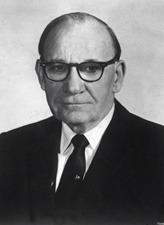
a Representative and a Senator from Arkansas; born in Sheridan, Grant County, Ark., February 25, 1896; studied law and was admitted to the bar in 1913, when he was seventeen; commenced practice in Sheridan, Ark.; during the First World War served in the United States Army as a first lieutenant in the Aviation Section of the Signal Corps 1917-1919; moved to Malvern, Ark., in 1919 and continued the practice of law; prosecuting attorney of the seventh judicial district of Arkansas 1927-1930; elected as a Democrat to the Seventy-fourth Congress; reelected to the Seventy-fifth Congress (January 3, 1935-January 3, 1939); was not a candidate in 1938 for reelection but was an unsuccessful candidate for election to the United States Senate; resumed the practice of law in Camden, Ark.; elected as a Democrat to the United States Senate in 1942; reelected in 1948, 1954, 1960, 1966 and 1972 and served from January 3, 1943, until his death; chairman, Committee on Expenditures in Executive Departments (Eighty-first and Eighty-second Congresses); Committee on Government Operations (Eighty-fourth through Ninety-second Congresses), Select Committee on Labor Management Relations (Eighty-fifth and Eighty-sixth Congresses), Committee on Appropriations (Ninety-second through Ninety-fifth Congresses); died in Little Rock, Ark., November 28, 1977; interment in Roselawn Memorial Park.
(Source: http://bioguide.congress.gov/scripts/...)
More:
http://en.wikipedia.org/wiki/John_Lit...
http://www.encyclopediaofarkansas.net...
 Carl Hayden:
Carl Hayden: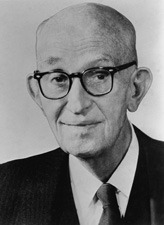
a Representative and a Senator from Arizona; born in Hayden’s Ferry (now Tempe), Maricopa County, Ariz., October 2, 1877; attended the public schools; graduated from the Normal School of Arizona at Tempe in 1896; attended Leland Stanford Junior University, California 1896-1900; engaged in mercantile pursuits and in the flour-milling business at Tempe 1900-1904; member, Tempe Town Council 1902-1904; treasurer of Maricopa County 1904-1906; sheriff of Maricopa County 1907-1912; upon the admission of Arizona as a State into the Union was elected as a Democrat to the Sixty-second Congress; reelected to the seven succeeding Congresses and served from February 19, 1912, to March 3, 1927; did not seek renomination, having become a candidate for United States Senator; during the First World War was commissioned a major of Infantry in the United States Army; elected as a Democrat to the United States Senate in 1926 for the term commencing March 4, 1927; reelected in 1932, 1938, 1944, 1950, 1956, and again in 1962 for the term ending January 3, 1969; was not a candidate in 1968 for reelection to the United States Senate; served as President pro tempore of the Senate during the Eighty-fifth through the Ninetieth Congresses; chairman, Committee on Printing (Seventy-third through Seventy-ninth Congresses), Committee on Rules and Administration (Eighty-first and Eighty-second Congresses), co-chairman, Joint Committee on Printing (Eighty-first and Eighty-second, and Eighty-fourth through Ninetieth Congresses), co-chairman, Joint Committee on Inaugural Arrangements (Eightieth and Eighty-second Congresses), chairman, Committee on Appropriations (Eighty-fourth through Ninetieth Congresses); his record for fifty-six consecutive years of service in the Congress, including an unprecedented forty-two in the Senate, was unsurpassed at the time of his retirement; retired and resided in Tempe, Ariz.; died in Mesa, Ariz., January 25, 1972; cremated; ashes interred in family plot at Tempe Butte Cemetery, Tempe, Ariz.
(Source: http://bioguide.congress.gov/scripts/...)
More:
http://en.wikipedia.org/wiki/Carl_Hayden
http://www.senate.gov/artandhistory/h...
 Orville Freeman:
Orville Freeman: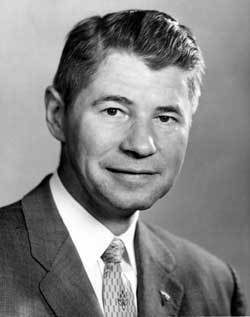
Orville Lothrop Freeman was born on March 9, 1918, in Minneapolis, Minnesota. Freeman attended public school in Minneapolis and then received his B.A. from the University of Minnesota in 1940. During World War II, he served in the Marine Corps, following which he received his A.B. and LL.B. from the University of Minnesota.
Freeman practiced law in Minneapolis, becoming a close political associate of Herbert Humphrey, who was then serving as mayor of Minneapolis and who also had a great deal of influence in the Democratic-Farmer-Labor Party (DFL). With Humphrey's aid, Freeman helped make the DFL a powerful political organization that in 1954 would help to overthrow Republican dominance in the state.
In 1954, Freeman became governor of Minnesota, where he earned a reputation as a progressive; he was re-elected to that post in 1956 and 1958. After Humphrey withdrew from the 1960 presidential race, Freeman gave his support to Kennedy-a favor Kennedy returned following his victory in the 1960 presidential election.
Freeman himself had failed win re-election in 1960, allowing Kennedy to appoint him as secretary of agriculture. When Freeman took the post, America was suffering from chronic overproduction that was exacerbated by technological innovations. The Kennedy administration believed it important to have the power to set acreage limitations and to control the amount of a crop actually brought to market. It therefore became Freeman's goal to cut production, increase farm incomes, and distribute, on a large scale, surpluses to the hungry.
Freeman hoped that the department could reduce its budget and focus on other issues, such as rural development, land conversion, and research. Freeman was able to establish a feed-grain reduction program, cut the amount of wheat grown, expand the Agricultural Trade Development and Assistance Act, forge a wheat deal with the Russians in 1963, and complete research on foodstuffs for survival after a nuclear attack. The Food for Peace program became crucial to distributing U.S. farm surpluses overseas and reducing the amount of dollars spent abroad. After serving as secretary of agriculture until January 1969, Freeman became president of the Business International Corporation in 1970.
(Source: http://millercenter.org/president/lbj...)
More:
http://www.mnhs.org/people/governors/...
http://en.wikipedia.org/wiki/Orville_...
http://news.minnesota.publicradio.org...
http://www.jfklibrary.org/Research/Re...
 John Gronouski:
John Gronouski:
John Austin Gronouski was born in Dunbar, Wisconsin, on October 26, 1919. Gronouski attended St. Peter's School in Oshkosh, Wisconsin, and then studied at Oshkosh Teachers College. He received a B.A. in 1942 from the University of Wisconsin.
Following graduation, Gronouski joined the Army Air Corps and served as a navigator with the Eighth Air Force. Gronouski was discharged in October 1945, returning to the University of Wisconsin to earn his M.A. in 1947; he then took various lecturing and research positions from 1948 to 1953. In 1955, Gronouski earned his Ph.D. from the University of Wisconsin, and continued to teach and conduct research until 1959, when he was appointed research director of the Wisconsin Department of Taxation. Gronouski was also named executive director of the Revenue Survey Commission that same year. In 1960, he became Wisconsin state commissioner of taxation.
Gronouski took over the slot of postmaster general from J. Edward Day on September 30, 1963, and held that position into the Johnson administration, resigning on November 2, 1965. As postmaster general, Gronouski added the use of the zip code, instituted a vertically improved mail system of delivery, proposed to do away with airmail postage, and reclassified first class mail as a priority class.
After his time in the cabinet, Gronouski served the United States as ambassador to Poland, a post he held from 1965 to 1968. John A. Gronouski died on January 7, 1996.
(Source: http://millercenter.org/president/ken...)
More:
http://en.wikipedia.org/wiki/John_A._...
 Roy Wilkins:
Roy Wilkins:
was a prominent civil rights activist in the United States from the 1930s to the 1970s. Wilkins was active in the National Association for the Advancement of Colored People (NAACP) and between 1931 and 1934 was assistant NAACP secretary under Walter Francis White. When W. E. B. Du Bois left the organization in 1934, Wilkins replaced him as editor of Crisis, the official magazine of the NAACP.
Roy Wilkins was born in St. Louis, Missouri. He grew up in the home of his aunt and uncle in a low-income, integrated community in St. Paul, Minnesota. Working his way through college at the University of Minnesota, Wilkins graduated from the University of Minnesota with a degree in sociology in 1923. He worked as a journalist at The Minnesota Daily and became editor of St. Paul Appeal, an African-American newspaper. After he graduated he became the editor of the Kansas City Call. In 1929 he married social worker Aminda "Minnie" Badeau; the couple had no children.
In 1950, Wilkins-along with A. Philip Randolph, founder of the Brotherhood of Sleeping Car Porters, and Arnold Aronson, a leader of the National Jewish Community Relations Advisory Council-founded the Leadership Conference on Civil Rights (LCCR). LCCR has become the premier civil rights coalition, and has coordinated the national legislative campaign on behalf of every major civil rights law since 1957
In 1955, Wilkins was named executive secretary (the title was later changed to executive director in 1964) of the NAACP. He had an excellent reputation as an articulate spokesperson for the civil rights movement. One of his first actions was to provide support to civil rights activists in Mississippi who were being subject to a "credit squeeze" by members of the White Citizens Councils.
Wilkins backed a proposal suggested by Dr. T.R.M. Howard of Mound Bayou, Mississippi who headed the Regional Council of Negro Leadership, a leading civil rights organization in the state. Under the plan, black businesses and voluntary associations shifted their accounts to the black-owned Tri-State Bank of Memphis, Tennessee. By the end of 1955, about $280,000 had been deposited in Tri-State for this purpose. The money enabled Tri-State to extend loans to credit-worthy blacks who were denied loans by white banks.
Wilkins participated in the March on Washington (1963), the Selma to Montgomery marches (1965), and the March Against Fear (1966).
He believed in achieving reform by legislative means; he testified before many Congressional hearings and conferred with Presidents Kennedy, Johnson, Nixon, Ford, and Carter. Wilkins strongly opposed militancy in the movement for civil rights as represented by the "black power" movement.
In 1967, Wilkins was awarded the Presidential Medal of Freedom by Lyndon Johnson. During his tenure, the NAACP led the nation into the Civil Rights movement and spearheaded the efforts that led to significant civil rights victories, including Brown v. Board of Education, the Civil Rights Act of 1964, and the Voting Rights Act of 1965.
In 1977, at the age of 76, Wilkins retired from the NAACP and was succeeded by Benjamin Hooks. He died September 9, 1981. In 1982 his autobiography Standing Fast: The Autobiography of Roy Wilkins was published posthumously.
(Source: http://www.naacp.org/pages/naacp-hist...)
More:
http://en.wikipedia.org/wiki/Roy_Wilkins
http://www.jfklibrary.org/Education/S...
 Roy Wilkins
Roy Wilkins
 James Farmer:
James Farmer:
James Farmer was born in Marshall, Texas, on January 12, 1920, but was raised in Mississippi. He enrolled at Wiley College in Marshall, Texas, at the age of 14. Graduating in 1938, Farmer went on to Howard University's School of Religion and graduated from there in 1941. During World War II, Farmer applied for conscientious objector status and was deferred from the draft because of his divinity degree.
Rather than become an ordained Methodist minister, Farmer began work as Secretary for Race Relations at the Fellowship of Reconciliation (FOR), a Quaker organization. Then in 1942, Farmer, along with George Houser, founded the Congress of Racial Equality (CORE) in Chicago, IL. Based on its founders' beliefs in the teachings of Mahatma Ghandi, CORE pioneered the use of nonviolent protest tactics such as sit-ins and freedom rides. Farmer is often credited with organizing the first sit-in of the civil rights movement at a Chicago coffee shop.
Following the February 1, 1960 Woolworth’s sit-in by four North Carolina A&T State University students, Farmer and CORE representatives traveled to Greensboro, NC. Some of Farmer’s other well-known accomplishments as head of CORE include organizing the 1961 Freedom Rides, co-sponsoring the 1963 March on Washington, and participation in the 1964 Freedom Summer during which three white CORE members were murdered.
In the spring of 1966, Farmer left CORE. He continued to lecture publicly on civil rights, including marches in Greensboro and High Point. Farmer took a teaching position at Lincoln University in Pennsylvania and in 1968 ran for U.S. Congress. Shortly thereafter, he went to work for Richard M. Nixon's administration as Assistant Secretary of Health, Education, and Welfare (HEW). Farmer retired from politics in 1971 and served on many organizational boards, including the Coalition of American Public Employees. In 1985 he published his autobiography, Lay Bare the Heart, and moved to Fredericksburg, Virginia, to begin a teaching career at Mary Washington College. In 1998 President Bill Clinton awarded him the Congressional Medal of Freedom, the nation’s highest civilian award. Farmer died in Virginia on July 9, 1999 at the age of 79.
(Source: http://library.uncg.edu/dp/crg/person...)
More:
http://en.wikipedia.org/wiki/James_L.....
http://www.lbjlib.utexas.edu/johnson/...
 A. Philip Randolph:
A. Philip Randolph:
Organizer, Brotherhood of Sleeping Car Porters, 1925; President, Brotherhood of Sleeping Car Porters, 1929-1968.
More:
http://en.wikipedia.org/wiki/A._Phili...
http://www.lbjlib.utexas.edu/johnson/...
http://www.apri.org/ht/d/sp/i/225/pid...
 Jervis Anderson
Jervis Anderson Andrew E. Kersten
Andrew E. Kersten Cornelius L. Bynum
Cornelius L. Bynum Paula F. Pfeffer
Paula F. Pfeffer
 Once again, thanks for all the excellent supplemental information. It was a brilliant move on the part of the Civil Rights leaders to adopt Gandhi's non-violent approach. I can only imagine how difficult it was to not respond to the violence in kind, but it paid off in all that television coverage.
Once again, thanks for all the excellent supplemental information. It was a brilliant move on the part of the Civil Rights leaders to adopt Gandhi's non-violent approach. I can only imagine how difficult it was to not respond to the violence in kind, but it paid off in all that television coverage.A picture is worth a thousand words! Love the photos of the "Johnson treatment." He really did get in people's faces, didn't he! A lot of people would have been antagonized by that invasion of personal space.
 Congratulations to the author on being listed as one of the 100 Notable books of 2012 by the New York Times
Congratulations to the author on being listed as one of the 100 Notable books of 2012 by the New York Times
 Congrats to Robert Caro!!
Congrats to Robert Caro!! And thanks to Bryan for all the fill-in background info provided here as well . . . he's practically written a whole book as well with all the info he's provided.
 Tomerobber wrote: "Congrats to Robert Caro!!
Tomerobber wrote: "Congrats to Robert Caro!! And thanks to Bryan for all the fill-in background info provided here as well . . . he's practically written a whole book as well with all the info he's provided."
I agree. Great job, Bryan. Thanks!!
 LBJ's Ranch:
LBJ's Ranch:
President Johnson had a deep attachment for place and heritage. The LBJ Ranch was where he was born, lived, died, and was buried. After the President's death in 1973, Mrs. Johnson continued to live at the Ranch part time until her death in 2007.
More:
http://www.nps.gov/lyjo/index.htm
http://en.wikipedia.org/wiki/Lyndon_B...
http://www.tshaonline.org/handbook/on...
 Ludwig Erhard:
Ludwig Erhard:
Economist and statesman who, as economics minister (1949–63), was the chief architect of West Germany’s post-World War II economic recovery. He served as German chancellor from 1963 to 1966.
Following World War I, Erhard studied economics, eventually joining an economics research institute. Because he was untainted by Nazi associations, he was entrusted by the postwar Allied occupation authorities with the reconstruction of industry in the Nürnberg-Fürth area. Thereafter he served successively as economics adviser in Middle and Upper Franconia, economics minister for Bavaria (1945–46), director of the Advisory Committee for Money and Credit (1947–48), and director of the economic council for the joint Anglo-U.S. occupation zone (1948–49). By the end of 1948 the currency reforms that he had instituted the preceding summer, coupled with the abolition of rationing and of other commercial restrictions, had already somewhat buoyed the prostrate German economy.
From September 1949, as economics minister of the new Federal Republic of Germany under Chancellor Konrad Adenauer, Erhard was commissioned to continue his policies of reconstruction. In the following years he applied his “social market system” to the problems of economic renewal with phenomenal results, achieving what has often been called the German “economic miracle.” Based on free-market capitalism, his system included special provisions for housing, farming, and social programs.
Erhard was appointed federal vice-chancellor in 1957 and succeeded Adenauer as chancellor in October 1963. His government was troubled by his predecessor’s persistent criticisms, an uncertain foreign policy, and a budget deficit. His decision to raise taxes in response to a slight recession in the summer of 1966 caused cabinet members to defect, and by the end of the year he had been forced to resign. In 1967 he was named honorary chairman of the Christian Democratic Union.
(Source: http://www.britannica.com/EBchecked/t...)
More:
http://en.wikipedia.org/wiki/Ludwig_E...
http://www.pbs.org/wgbh/commandinghei...
 Alfred C. Mierzejewski
Alfred C. Mierzejewski
 Bascom Timmons:
Bascom Timmons:Bascom Timmons, political correspondent and newspaperman, the tenth of eleven children born to C. Amplias and Martha Ann (Crenshaw) Timmons, was born on March 31, 1890, on the family farm in Collin County, Texas. Nine months later the family moved to a new homestead south of Washburn. Then in 1894 they moved to Goodnight, where Noll, as he was called, attended public schools. After another move to Randall County in 1903, he went to Amarillo Academy. By the time he was fourteen he had developed a strong interest in national affairs and was well informed on politics. Timmons began writing for the Amarillo newspapers as early as 1906. In 1908 he began submitting articles on a regular basis to the Daily Panhandle, founded by Peter E. Boesen and S. A. Brewster, and received his first pay for news wired to the Fort Worth Record (see FORT WORTH STAR-TELEGRAM). Later that year he accompanied Lee Bivins to the Democratic national convention in Denver. His coverage of the happenings there landed him jobs with the Abilene Reporter (see ABILENE REPORTER-NEWS) and the St. Louis Post-Dispatch in 1909. By 1911 he was with the Milwaukee Sentinel, and the following year the Chicago Record-Herald hired him in time to cover the Republican convention, which was held in Chicago. The Record-Herald then sent him to cover the Democratic convention in Baltimore, where Woodrow Wilson won the presidential nomination. As the youngest reporter there, Timmons attracted the attention of the Washington Post. After about two years with the Post, he returned briefly to Amarillo to purchase the Daily Panhandle, which he edited until the paper was sold in 1915 by Joseph E. Nunn and subsequently merged with the Amarillo Daily News. Timmons then returned to his old job in Washington and made the capital his permanent home; even then, he continued to cast his vote in Potter County. During World War I he saw active service in the army. In 1925 he married Ethel Boardman from Oklahoma City, who had worked as a secretary in the United States Senate offices.
Soon after his marriage, Timmons established his own news bureau in Washington with a staff of twelve employees. At one time his wires and columns were appearing in fifty-five newspapers nationwide, among them the Houston Chronicle, owned by his friend Jesse H. Jones. Timmons became a confidant of many well-known political figures, including Calvin Coolidge, Charles G. Dawes, Herbert Hoover, John Nance Garner, and Franklin D. Roosevelt, and made it a point to cover national conventions during election years. Many politicians sought his advice, and his peers conferred on him many honors over the years. Robert Sherrod, Sarah McClendon, and Ann Cottrell Free were among the noted journalists who launched their careers under his employ. At the height of the Great Depression in 1932–33, Timmons was president of the National Press Club when that organization faced bankruptcy and the probability of losing its National Press Building. Through his efforts, which included a successful lobby for changes in the bankruptcy law, the club was reorganized and was able to keep its headquarters. In the 1940 presidential election Timmons, who was not in favor of a third term for Roosevelt and was disappointed that Garner was not on the ticket, decided partly as a joke to run for vice president, but lost the nomination to Henry A. Wallace. During his lengthy career as a political analyst, Timmons wrote three biographies: Garner of Texas(1948), Portrait of an American: Charles Gates Dawes (1953), and Jesse H. Jones: The Man and the Statesman(1956). He continued to manage his news syndicate until his retirement in 1974, four years after his wife's death. As an animal lover, he "adopted" many pets; a cat cemetery in Washington is the final resting place for 125 of his cats. Timmons remained prominent in Washington press circles until his death on June 7, 1987. He was buried in Llano Cemetery, Amarillo.
(Source: http://www.tshaonline.org/handbook/on...)
More:
http://en.wikipedia.org/wiki/Bascom_N...
http://web2.millercenter.org/lbj/oral...
 Anton Moursund:
Anton Moursund: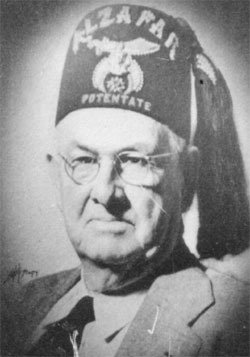
Anton was a former associate justice of the Fourth Court of Civil Appeals and a practicing attorney.
Immediately after graduating from the University of Texas at Austin, entered private practice in Fredericksburg, Texas with his father, the late A.W. Moursund.
In 1901 he was elected to the 27th Texas Legislature from Gillespie, Blanco, Hays, and Comal Counties to 1903.
He was appointed by the Governor to the appeals court in 1912 where he served until 1920. Since then, he has practiced law in San Antonio until shortly before his death.
From 1934 until 1956, he was a member of the Board of Law Examiners' of Texas, acting as chairman for eight years.
Judge Moursund was a member of Perfect Union Lodge #10 AF&AM, the Scottish Rite Bodies, and Alzafar Shrine. He was a 33rd degree Mason. He was past potentate of the Alzafar Shrine.
(Source: http://www.findagrave.com/cgi-bin/fg....)
More:
http://en.wikipedia.org/wiki/Anton_N....
 William Bundy:
William Bundy: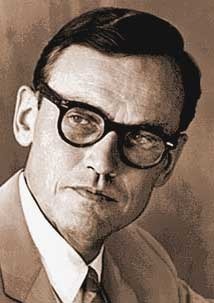
Raised in Boston, Massachusetts, William Bundy came from a family long involved in politics. He was one of the chief architects of the Vietnam War and coauthor of the Tonkin Gulf Resolution. He served with his younger brother McGeorge Bundy as foreign policy advisor to Presidents John F. Kennedy and Lyndon B. Johnson (1961-69). He was married to Mary Acheson, the daughter of Truman's Secretary of State Dean Acheson.
While his brother, McGeorge, started in academia, William went to work with the CIA. At the outbreak of World War II, he joined the Army Signal Corps and was eventually posted to Bletchley Park where he commanded the contingent of American codebreakers cracking German ciphers. After the war, he attended Harvard law school and then joined the young intelligence service.
He became the Assistant Secretary of State for Far Eastern Affairs, and thus played an important role in the Vietnam War. He was a strong proponent for participating in Vietnam early in his tenure. He supported escalating the American involvement and the bombing of North Vietnam. He later came to strongly regret the decision, one of the first administration members to do so. He spent much of the rest of his career trying to understand how he and so many others had made such a terrible mistake. He was somewhat to the left of his brother politically, and was a spirited opponent of Joseph McCarthy. He was also considered one of the administration's more dovish members on Vietnam.
He left politics on 1969 to teach at MIT, he also became editor of Foreign Affairs. In 1972 he moved to Princeton University where he remained for the rest of his life. His most noted work is Tangled Web which explores the foreign policy of the Nixon administration. After leaving government, Bundy became a harsh critic of Nixon and Kissinger's handling of the Vietnam War.
(Source: http://www.digitalhistory.uh.edu/lear...)
More:
http://en.wikipedia.org/wiki/William_...
http://openvault.wgbh.org/catalog/vie...
http://www.nytimes.com/2000/10/07/us/...
 Charles Halleck:
Charles Halleck: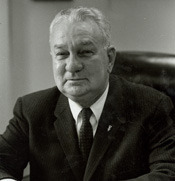
a Representative from Indiana; born in Demotte, Jasper County, Ind., August 22, 1900; attended the public schools; during the First World War served in the Infantry of the United States Army; Indiana University at Bloomington, A.B., 1922 and from the law department of the same university, LL.B., 1924; was admitted to the bar in 1924 and commenced practice in Rensselaer, Ind.; prosecuting attorney for the thirtieth judicial circuit 1924-1934; elected as a Republican to the Seventy-fourth Congress to fill the vacancy caused by the death of Congressman-elect Frederick Landis; reelected to the Seventy-fifth and to the fifteen succeeding Congresses and served from January 29, 1935, to January 3, 1969; majority leader (Eightieth and Eighty-third Congresses); minority leader (Eighty-sixth, Eighty-seventh, and Eighty-eighth Congresses); was not a candidate for reelection in 1968 to the Ninety-first Congress; delegate to each Republican National Convention from 1936 to 1968, and permanent chairman in 1960; was a resident of Rensselaer, Ind. until his death in Lafayette, Ind., March 3, 1986; interment in Weston Cemetery, Rensselaer.
(Source: http://bioguide.congress.gov/scripts/...)
More:
http://en.wikipedia.org/wiki/Charles_...
 Alaska Earthquake of 1964:
Alaska Earthquake of 1964:
On March 27, 1964, at 5:36 p.m. ADT (03:36 3/28 UTC) a great earthquake of magnitude 9.2 (moment magnitude) occurred in Prince William Sound region of Alaska. The epicenter was about 10 km east of the mouth of College Fiord, approximately 90 km west of Valdez and 120 km east of Anchorage. The epicenter was located at Lat. 61.04N, Lon. 147.73W, at a depth of approximately 25 km. This earthquake is the second largest earthquake ever recorded in the world. after a M9.5 earthquake in Chile in 1960. The duration of rupture lasted approximately 4 minutes (240 seconds).
Cause
The northwestward motion of the Pacific plate at about 5 to 7 cm per year causes the crust of southern Alaska to be compressed and warped, with some areas along the coast being depressed and other areas inland being uplifted. After periods of tens to hundreds of years, this compression is relieved by the sudden southeastward motion of portions of coastal Alaska as they move back over the subducting Pacific plate.
As a result of the 1964 quake, the Latouche Island area moved about 18 meters to the southeast. Also, the patterns of uplift and subsidence which had been slowly developing prior to the earthquake were suddenly reversed, with areas around Montague Island being uplifted 4-9 meters and areas around Portage down-dropped as much as 3 meters. The hinge line (line of no vertical change separating the uplift and subsidence zones) extended from near the epicenter in Prince William Sound to the SE coast of Kodiak Island. This vertical deformation affected and area of approximately 250,000 km2 (100,000 miles2). The end results was the movement of the Pacific plate under the North American plate by about 9 meters on average.
Aftershocks
The six-story Four Seasons apartment building in Anchorage was completely destroyed. It was unoccupied at the time of the earthquake.
The aftershock zone of this earthquake was about 250 km wide and extended about 800 km from Prince William Sound to the southwestern end of Kodiak Island. The mainshock and its aftershocks occurred on a fault which is part of the boundary between the Pacific and North American plates. Thousands of aftershocks were recorded in the months following the mainshock. In the first day there were 11 aftershocks with magnitudes greater than 6.0; in the next three weeks there were 9 more. Smaller aftershocks continued for more than a year.
Damage
The area where there was significant damage covered about 130,000 square kilometers. The area in which it was felt was about 1,300,000 square kilometers (all of Alaska, parts of Canada, and south to Washington). The four minute duration of shaking triggered many landslides and avalanches. Major structural damage occurred in many of the major cities in Alaska. The damage totalled 300-400 million dollars (1964 dollars).
Losses
The number of deaths from the earthquake totalled 131; 115 in Alaska and 16 in Oregon and California. The death toll was extrememly small for a quake of this magnitude due to low population density, the time of day and the fact that it was a holiday, and the type of material used to construct many buildings (wood).
(Source: http://www.aeic.alaska.edu/quakes/Ala...)
More:
http://en.wikipedia.org/wiki/1964_Ala...
http://earthquake.usgs.gov/earthquake...
http://www.anchoragemuseum.org/galler...
 Jim Garrison:
Jim Garrison: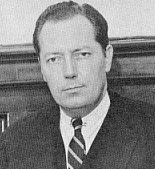
was District Attorney of New Orleans, Louisiana from 1962 to 1973; he is best known for his investigations into the assassination of President John F. Kennedy.
Garrison remains a colorful and controversial figure; opinions differ as to whether he uncovered the actual conspiracy behind the John F. Kennedy assassination but was blocked from successful prosecution by Federal government coverup, whether he bungled his chance to uncover the truth of the conspiracy, or whether the entire case was a wild goose chase motivated by Garrison's desire for self publicity.
Biography
Jim Garrison was born with the name Earling Carothers Garrison in Knoxville, Iowa. His family moved to New Orleans in his childhood. He served in the United States Army in World War II, then got a law degree from Tulane University. He briefly worked for the FBI, then went into private law practice. He served as New Orleans' assistant District Attorney from 1954 to 1958. In 1961 he ran for District Attorney, succeeding in the race despite lack of major political backing, and took office in May of the following year. In 1973 he lost the office to Harry Connick, Sr.. He later became a circuit court judge, an office he held until his death.
Garrison wrote a book about his investigations of the Kennedy assassination, On the Trail of the Assassins, published in 1988.
The 1991 Oliver Stone motion picture "JFK" was partially based on Garrison's book. Kevin Costner played a fictionalized version of Garrison in the movie. Garrison himself had a small on-screen role in the film, playing United States Supreme Court Justice Earl Warren.
(Source: http://www.biographybase.com/biograph...)
More:
http://en.wikipedia.org/wiki/Jim_Garr...
http://www.spartacus.schoolnet.co.uk/...

 Jim Garrison
Jim Garrison Joan Mellen
Joan Mellen
 Paul Corbin:
Paul Corbin:(1914 - 1990) Campaign worker for John F. Kennedy (1960); Special Assistant to the Chairman, Democratic National Committee (1961 - 1964); Independent political consultant (1964-1968).
More:
http://www.nytimes.com/1990/01/04/obi...
 I just returned from Texas, where I visited both the Johnson library and the Johnson ranch. The library exhibits were just redone last year, and our friends said that more of the ranch was open than had been previously. Both of these are highly recommended. Having recently read the Caro book, I especially enjoyed them.
I just returned from Texas, where I visited both the Johnson library and the Johnson ranch. The library exhibits were just redone last year, and our friends said that more of the ranch was open than had been previously. Both of these are highly recommended. Having recently read the Caro book, I especially enjoyed them.One thing that is really cool about the museum/library is that you can pick up phones and listen to one of Johnson's many conversations. I especially enjoyed one between Johnson and RFK.
Ann, the conversation that you listened to between Johnson and RFK - what was it about and was it cordial and what sense did you have of the relationship between the two men given Caro's book.
 Bentley, unfortunately, the details of the discussion escape me. JFK wanted something from Johnson to help his Senatorial campaign. Johnson was cordial, as was JFK. This kind of surprised me, in light of how much they hated each other. It was a very business like conversation. Johnson was willing to give JFK what he wanted, but not until JFK agreed to do something he wanted him to do. He was VERY persistent. I think it had something to do with having "Negroes" present at his campaign rally.
Bentley, unfortunately, the details of the discussion escape me. JFK wanted something from Johnson to help his Senatorial campaign. Johnson was cordial, as was JFK. This kind of surprised me, in light of how much they hated each other. It was a very business like conversation. Johnson was willing to give JFK what he wanted, but not until JFK agreed to do something he wanted him to do. He was VERY persistent. I think it had something to do with having "Negroes" present at his campaign rally.
message 249:
by
Bentley, Group Founder, Leader, Chief
(last edited Nov 07, 2014 07:05AM)
(new)
-
rated it 4 stars
Landslide: LBJ and Ronald Reagan at the Dawn of a New America
Feature Video
1964 Presidential Campaign Television Spot ( Heavy Stuff- imagine seeing a Presidential video like that today)
http://www.lbjlibrary.net/collections...
The “Daisy” campaign ad – In the 1964 presidential campaign, the Democratic National Committee commissioned a TV ad that is commonly called the “Daisy” ad. This video may be downloaded and used free of charge. However, the Democratic National Committee allows the LBJ Library to provide the ad to the public. Please credit the video: Courtesy Democratic National Committee.
Download: MPEG-4 movie (15.2 MB)
1964 Presidential Campaign Television Spot "Peace, Little Girl", aka the "Daisy Spot"
http://www.lbjlibrary.org/assets/uplo...
Serial #: B7314
Date: 1964
Event: 1964 Presidential Campaign Television Spot
Location: Unknown
Credit: Democratic National Committee
Rights Info: No usage fees. User must observe DNC guidelines.
Source: Contact LBJ Library for more information.
Feature Video
1964 Presidential Campaign Television Spot ( Heavy Stuff- imagine seeing a Presidential video like that today)
http://www.lbjlibrary.net/collections...
The “Daisy” campaign ad – In the 1964 presidential campaign, the Democratic National Committee commissioned a TV ad that is commonly called the “Daisy” ad. This video may be downloaded and used free of charge. However, the Democratic National Committee allows the LBJ Library to provide the ad to the public. Please credit the video: Courtesy Democratic National Committee.
Download: MPEG-4 movie (15.2 MB)
1964 Presidential Campaign Television Spot "Peace, Little Girl", aka the "Daisy Spot"
http://www.lbjlibrary.org/assets/uplo...
Serial #: B7314
Date: 1964
Event: 1964 Presidential Campaign Television Spot
Location: Unknown
Credit: Democratic National Committee
Rights Info: No usage fees. User must observe DNC guidelines.
Source: Contact LBJ Library for more information.
Address before Joint Session of Congress, 11/27/63. MP505
President Lyndon B. Johnson's Address to Congress, November 27, 1963
Description:
President Lyndon B. Johnson speaks to Congress following the assassination of President John F. Kennedy
http://youtu.be/LF0TxpxIMA0
President Johnson's address before joint session of Congress, 11/27/63.
Index terms: Speeches; Congress; JFK.
LBJ Library video donated by CBS.
Source: Contact LBJ Library for more information
President Lyndon B. Johnson's Address to Congress, November 27, 1963
Description:
President Lyndon B. Johnson speaks to Congress following the assassination of President John F. Kennedy
http://youtu.be/LF0TxpxIMA0
President Johnson's address before joint session of Congress, 11/27/63.
Index terms: Speeches; Congress; JFK.
LBJ Library video donated by CBS.
Source: Contact LBJ Library for more information
Books mentioned in this topic
Agent Orange: History, Science, and the Politics of Uncertainty (other topics)Matterhorn (other topics)
The Naked and the Dead (other topics)
The Thin Red Line (other topics)
A Bright Shining Lie: John Paul Vann and America in Vietnam (other topics)
More...
Authors mentioned in this topic
Edwin A. Martini (other topics)Karl Marlantes (other topics)
Norman Mailer (other topics)
James Jones (other topics)
Neil Sheehan (other topics)
More...


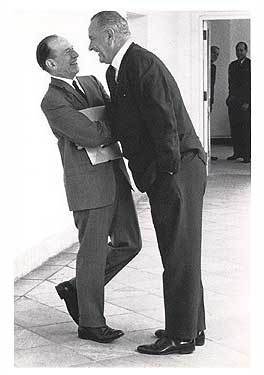
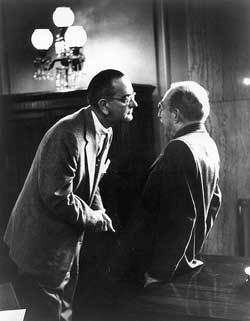



a Representative and a Senator from Florida; born in Atlantic City, N.J., November 14, 1913; moved to Miami, Fla., in 1919; attended the public schools of Dade County, Fla.; graduated from the University of Florida at Gainesville in 1936 and from its law school in 1938; admitted to the bar in 1938 and commenced practice in Miami, Fla.; assistant United States district attorney 1940-1942; during World War II served in the United States Marine Corps from May 1942 until discharged as a major in October 1945; special assistant to the U.S. attorney general from October 1945 until his resignation in January 1946 to begin his campaign for Representative in Congress; elected as a Democrat to the Eightieth and Eighty-first Congresses (January 3, 1947-January 3, 1951); was not a candidate for renomination in 1950; elected to the United States Senate in 1950; reelected in 1956 and 1962 and served from January 3, 1951, until January 3, 1969; was not a candidate for reelection in 1968; chairman, Special Committee on Aging (Eighty-eighth and Eighty-ninth Congresses), Select Committee on Small Business (Ninetieth Congress); resumed the practice of law in Washington, D.C., and Miami, Fla.; was a resident of Washington, D.C., and Indian Creek Village, Fla., until his death on January 20, 2007; interment at Arlington National Cemetery.
(Source: http://bioguide.congress.gov/scripts/...)
More:
http://en.wikipedia.org/wiki/George_S...
http://www.senate.gov/artandhistory/h...